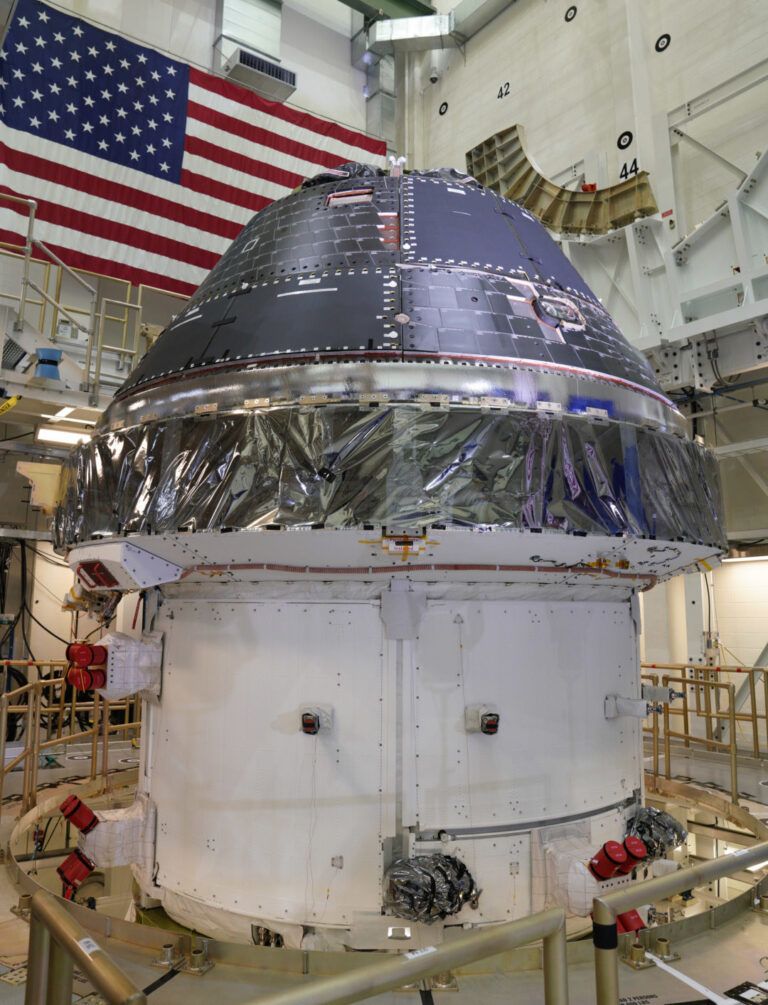The capsule for NASA’s Orion spacecraft has been assembled and is undergoing final integrated systems testing at the Kennedy Space Center in Florida, USA.
The crew module capsule will be used for the first mission to the Moon which is planned for next year after several delays. The Artemis 1 mission is an uncrewed test flight before the first manned mission using the capsule, which is planned to happen in 2023.
Technicians and engineers from Lockheed Martin, NASA and other supporting contractors have spent the last three years assembling and testing the capsule at the Kennedy Space Center. The work included installing the capsule’s avionic computers, harnesses, propulsion system and its 12 engines, 11 parachutes, its large 16ft -diameter heat shield, forward bay cover and numerous other systems and components.
Mike Hawes, Orion program manager for Lockheed Martin said, “Throughout assembly, the team tested and validated the many systems a hundred different ways to ensure they will operate as designed in the harshness of deep space.
“The Artemis 1 flight will test the design and workmanship of the capsule and its service module during the three-week mission out around the Moon and back. We’re excited for this mission as it paves the way for the first crewed mission in 2023, Artemis 2.”
The crew module and service module were stacked together in the Final Assembly and System Testing (FAST) cell at Kennedy last week. They are now being fully integrated, including connecting the physical retention bolts and the umbilical lines between the two modules. The FAST cell is also where the Apollo spacecraft were integrated.
The combined stack will then be powered up and undergo a series of integrated systems tests. In September, the combined stack will be shipped to NASA’s Plum Brook Station in Ohio, USA, where it will go through environmental testing in a large thermal vacuum chamber as well as testing for electromagnetic interference and compatibility.
Once Orion returns to Kennedy at the end of the year, the spacecraft will go through final preparations before Lockheed Martin delivers it to ground systems for launch processing and then the launch in June 2020.
Speaking at an event to mark the completion and commemorate the 50-year anniversary of the Apollo 11 Moon landing last week at the Kennedy Space Center, Lisa Callahan, vice president and general manager of commercial civil space at Lockheed Martin said, “Orion is a new class of spaceship, uniquely designed for long-duration deep space flight, that will return astronauts to the Moon and eventually take the first humans to Mars, and bring them all back safely.”
“Orion will accelerate scientific discovery of our solar system and will be the cornerstone of the defining space achievement of this era.”





